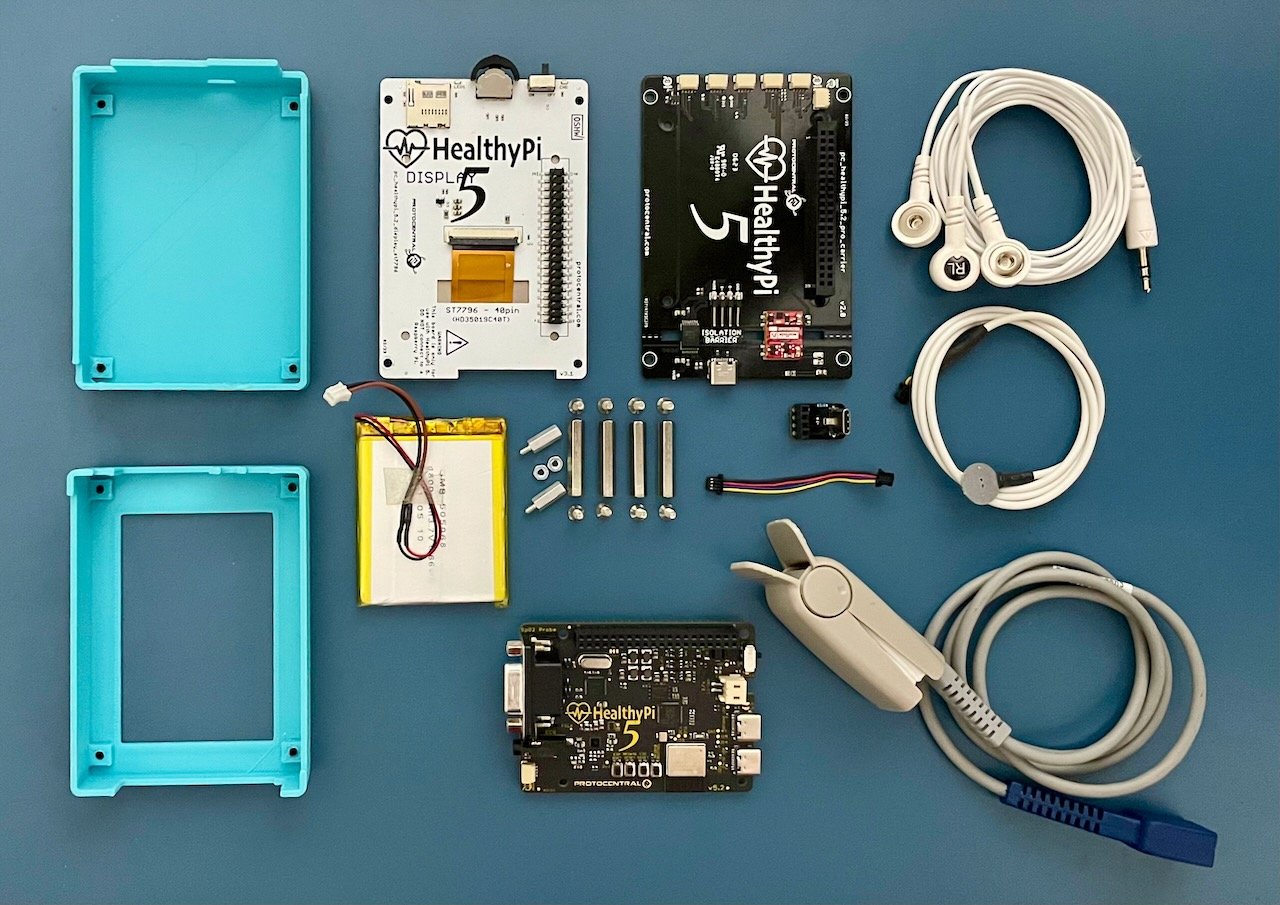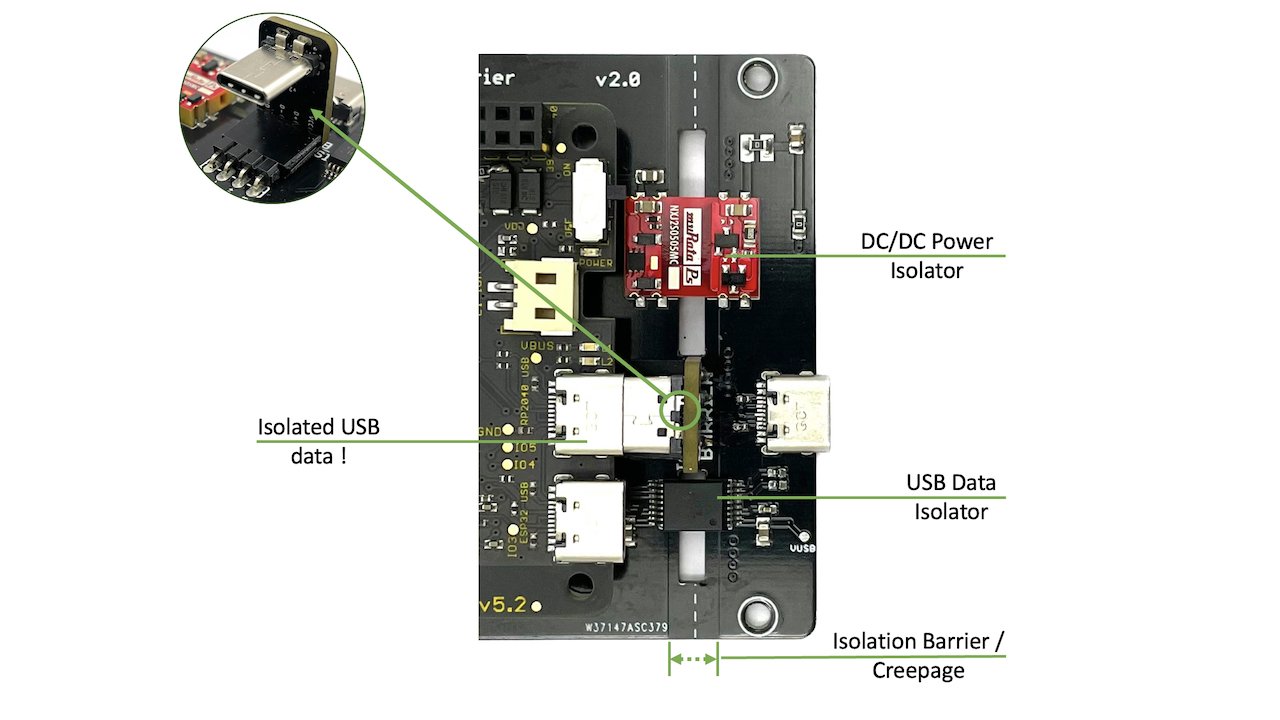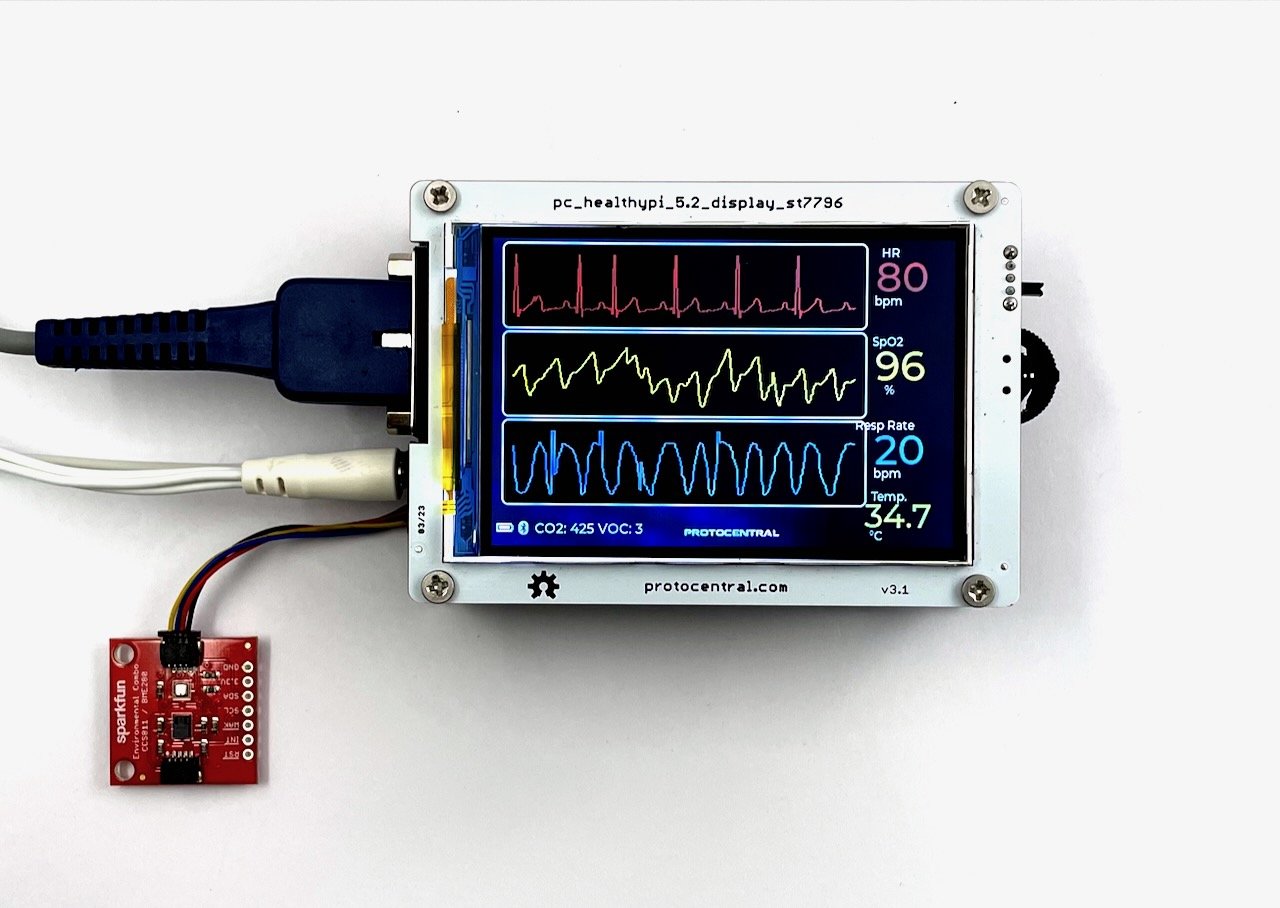Project update 2 of 13
Thank You For Your Support!
by Ashwin WhitchurchThank you to all of our early backers for your support, we are now officially funded! We had quite a few customers asking us about the HealthyPi 5 Complete Kit and what’s in it, so we decided to do a teardown of the product so we could show you what’s inside the box!
The Carrier Board - What’s It Good For?
What exactly is a HealthyPi 5 carrier board? The carrier board is a board on which HealthyPi sits. It provides the power, USB connectivity and a bunch of expansion connectors to add more sensors. The carrier board is also where the isolation is done.
Isolation means that the subject, the operator, and the device are all galvanically isolated from AC mains. Galvanic isolation is a method of isolating functional sections of electrical systems to prevent current flow; no direct conduction path is permitted. Energy or information can still be exchanged between the sections by other means, such as capacitance, induction or electromagnetic waves, or by optical, acoustic or mechanical means.(Source: Wikipedia)
Galvanic isolation is used where two or more electric circuits must communicate, but their grounds may be at different potentials. It is an effective method of breaking ground loops by preventing unwanted current from flowing between two units sharing a ground conductor. The distance between the isolated and non-isolated side is also important when evaluating isolation and this is called creepage.
The HealthyPi 5 carrier board achieves both power isolation and USB signal isolation. For power, the Murata NXJ1S0505 Isolated DC/DC converter is used and for the USB signals, we use the Texas Instruments ISOUSB111 USB Isolator.
The isolation modules achieves isolation by tiny substrate embedded transformers with the materials inside the chips acting as the reinforced insulation. These are designed to withstand up to 1500 VAC on an average for 1 minute, according to the requirements of IEC 60601-1-2, which governs the safety of medical devices in most parts of the world.
Isolation is important for devices like this. It helps keep subjects and operators safe, and it serves another purpose as well: isolation of noise from an AC-connected power source. Below is a signal acquired from HealthyPi 5 connected directly to a subject and powered directly from USB through a laptop connected to mains. (Not recommended!) All digital filters and the right-leg drive circuit have been disabled to show only the actual signals. The power line (50/60 Hz) noise is visible in the base line.
And below is an image of the same ECG recording from HealthyPi 5, but connected to USB through the carrier board. The ECG signal is cleaner and free of any noise. This is because of the isolation of the power supply and the USB signals.
Expansion Using Qwiic on the HealthyPi 5 Carrier Board
The HealthyPi 5 carrier board also has 5 Qwiic connectors for easy expansion. Qwiic is a standard developed by Sparkfun to make it easy to connect sensors and other devices to a microcontroller.
Below is an example of a Sparkfun Environmental Sensor Breakout showing CO2 and VOC levels on the HealthyPi 5 display itself. The sensor is connected to HealthyPi 5 using a Qwiic cable and HealthyPi 5 runs the driver library. This could be useful if, for example, you’re doing a study on indoor air quality and want to correlate it with ECG and PPG data. More details about Qwiic expansion using the carrier board with more sensors will be posted in a later update, so stay tuned.
Please drop us a line and let us know how you intend to expand your HealthyPi 5 using Qwiic connectors!




